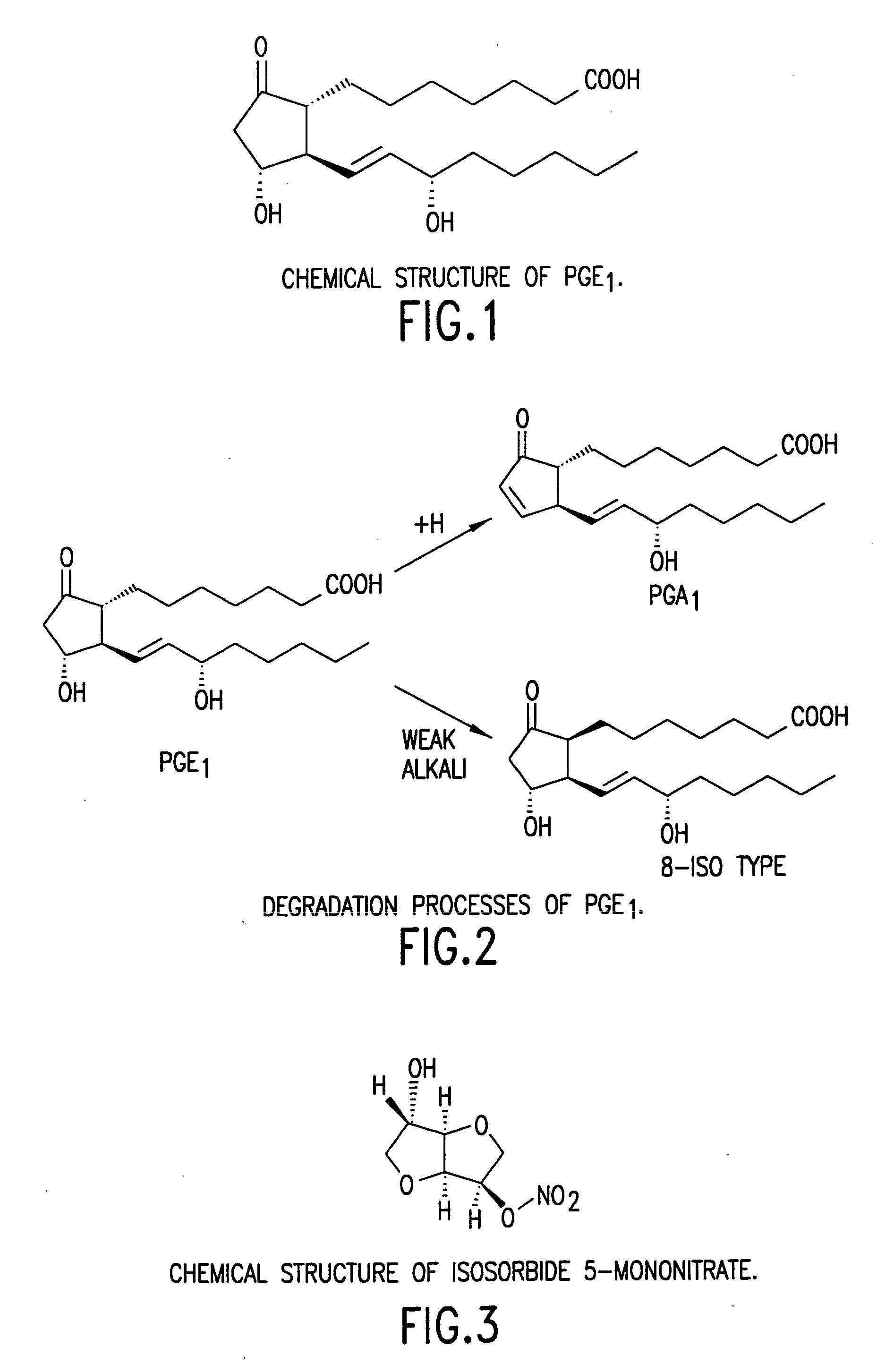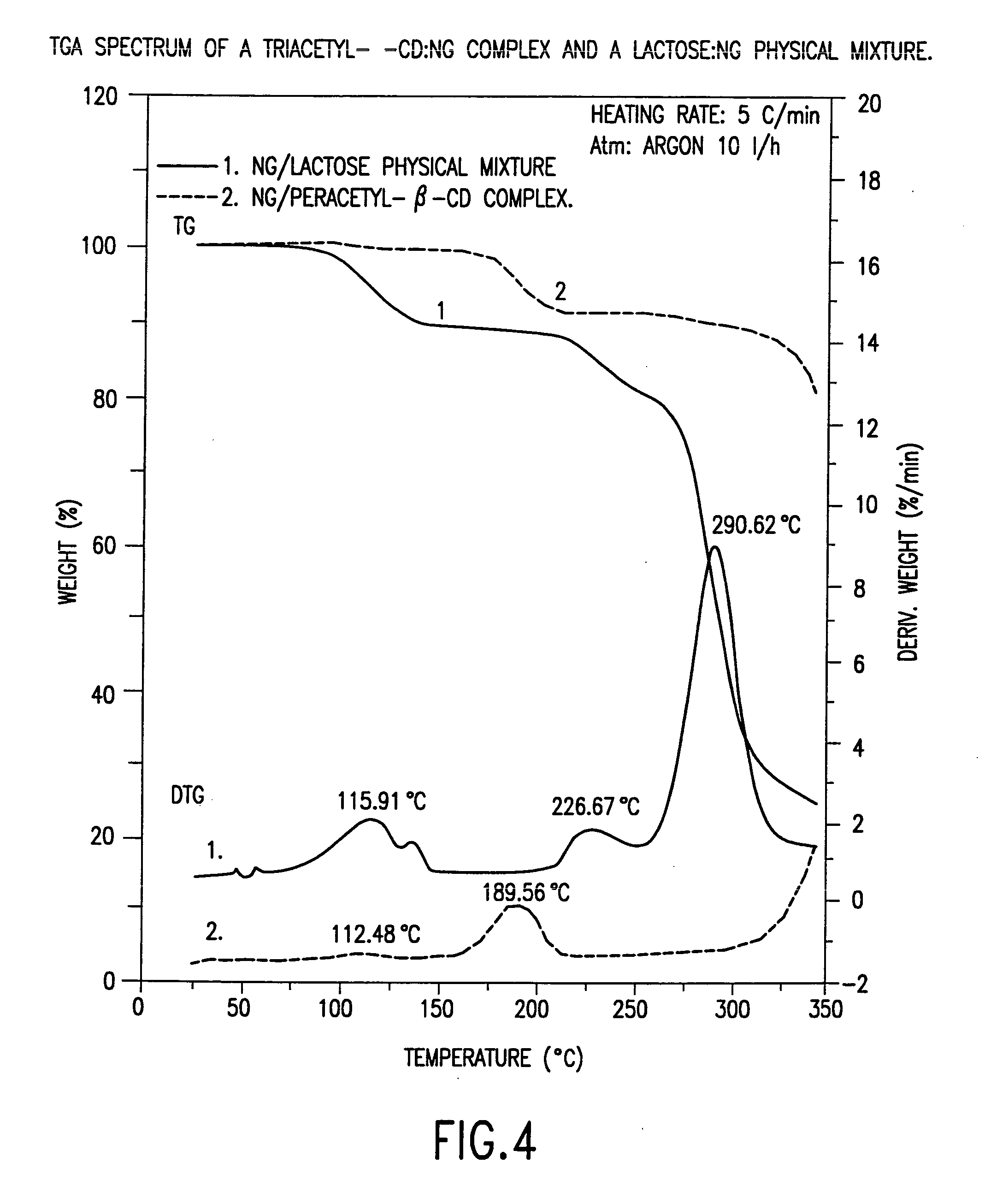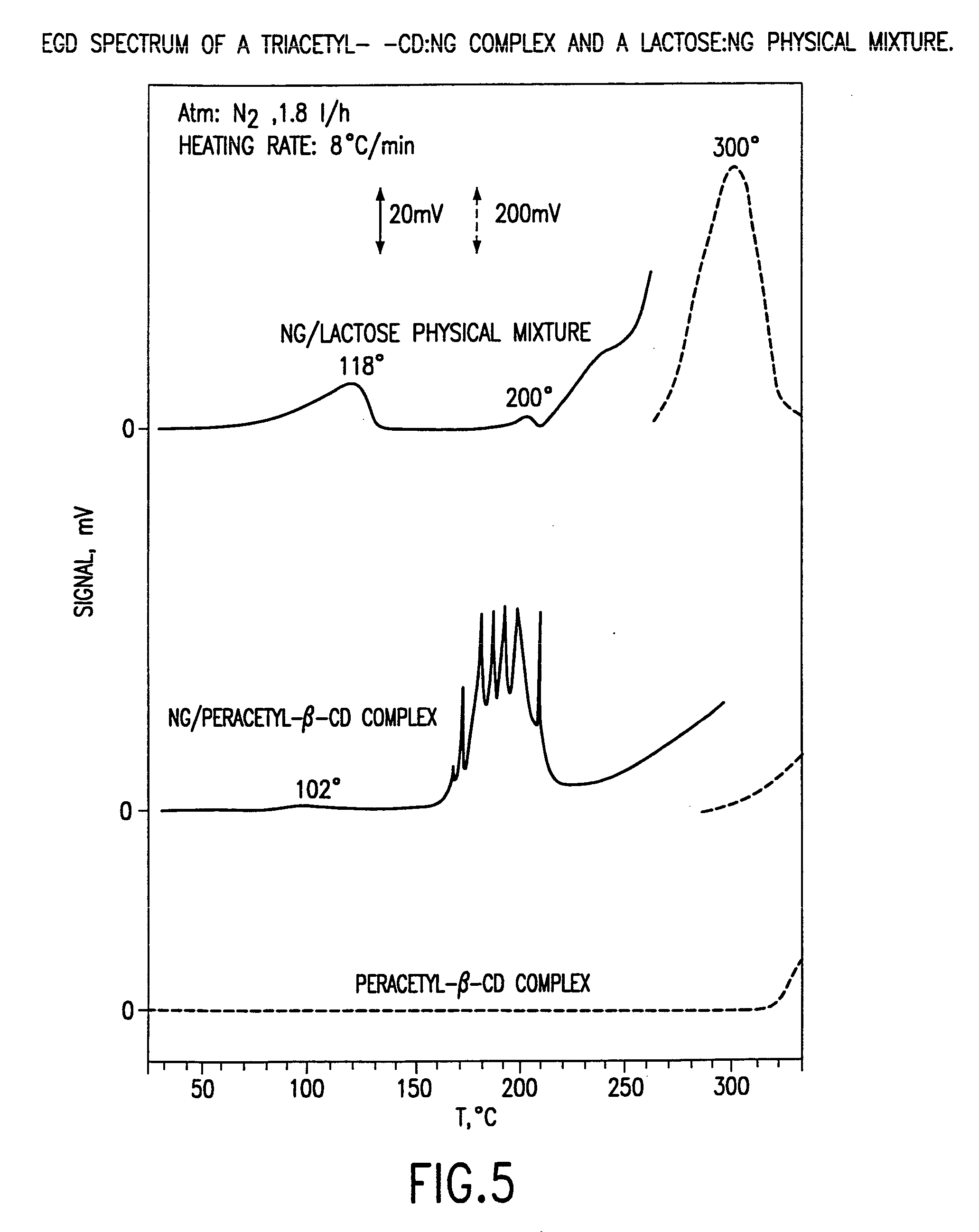Acylated cyclodextrin: guest molecule inclusion complexes
a technology of acylated cyclodextrin and inclusion complex, which is applied in the direction of ester active ingredients, powder delivery, medical preparations, etc., can solve the problems of difficult preparation of these compounds, and achieve the effect of reducing the number of infections and reducing thrombosis
- Summary
- Abstract
- Description
- Claims
- Application Information
AI Technical Summary
Benefits of technology
Problems solved by technology
Method used
Image
Examples
example 1
Preparation of Triacetyl-.beta.-CD:Nitroglycerin (NG) Complexes
[0082] A solution containing 29 g of triacetyl-.beta.-CD (DS=21) dissolved in 400 mL of 50% ethanol was prepared by ultrasonication at 35-40.degree. C. To the triacetyl-.beta.-CD solution was added approximately 3.5 g of NG dissolved in 150 mL ethanol. A clear, homogeneous solution was obtained which became opalescent on cooling. The triacetyl-.beta.-CD:NG inclusion complex was precipitated by adding approximately 300 mL of ice water. The complex was allowed to stand in refrigerator (ca. 5.degree. C.) for 48 hours before filtering and drying to a constant weight at 50.degree. C. in the presence of P.sub.2O.sub.5. This procedure provided 32 g of a triacetyl-.beta.-CD:NG inclusion complex containing 9.73 wt % NG as a white powder. The NG content of the mother liquid was found to be 57 .mu.g / mL. The yield of triacetyl-.beta.-CD:NG inclusion complex was approximately 90%. In order to evaluate the reproducibility and effect o...
example 2
Weight Loss of NG from Triacetyl-.beta.-CD:NG Complexes During Drying
[0084] Samples of triacetyl-.beta.-CD:NG inclusion complexes, as well as a lactose:NG physical mixture, were placed in individual open vessels in 2 mm layers. The samples were dried at 70.degree. C. Samples were taken at different time intervals and the NG content of the samples was determined by HPLC. Representative results for one triacetyl-.beta.-CD:NG inclusion complex and the lactose:NG physical mixture is summarized in Table 5.
2TABLE 5 Loss of NG from a triacetyl-.beta.-CD:NG inclusion complex and a lactose:NG physical mixture after storage at 70.degree. C. Time NG content remaining (hours) Complex Lactose mixture 0 9.73% 7.2% 4 9.76% 5.2% 10 9.67% 4.3%
[0085] This example demonstrates that NG is not lost from the triacetyl-.beta.-CD:NG inclusion complex even after drying at elevated temperatures for extended times.
example 3
Thermal Analysis of Triacetyl-.beta.-CD:NG Inclusion Complexes
[0086] In order to investigate retention of NG upon heating, samples of a triacetyl-.beta.-CD:NG complex (12.8% NG) and a lactose:NG physical mixture (7.2% NG) were analyzed by thermogravimetric analysis (TGA) and by evolved gas detection (EGD). The TGA studies were performed on an Universal V2.3C TA instrument in argon atmosphere, 10 L / h, heating rate of 5.degree. C. / min in a temperature range of 20-350.degree. C. Evolved gas detection curves were taken on a Thermal Analyzer System 916 DuPont (Carle 2000) in a nitrogen atmosphere, 1.8 L / h, heating rate 8.degree. C. / min. The results are summarized in FIGS. 4 and 5.
[0087] In the case of the lactose:NG physical mixture, TGA (FIG. 4) shows that the NG is volatilized at about 116.degree. C. In the case of the triacetyl-.beta.-CD:NG complex, little if any loss of the NG is observed at this temperature. Rather, significant loss of NG does not occur until approximately 190.degre...
PUM
| Property | Measurement | Unit |
|---|---|---|
| temperature | aaaaa | aaaaa |
| temperature | aaaaa | aaaaa |
| wt % | aaaaa | aaaaa |
Abstract
Description
Claims
Application Information
 Login to View More
Login to View More - R&D
- Intellectual Property
- Life Sciences
- Materials
- Tech Scout
- Unparalleled Data Quality
- Higher Quality Content
- 60% Fewer Hallucinations
Browse by: Latest US Patents, China's latest patents, Technical Efficacy Thesaurus, Application Domain, Technology Topic, Popular Technical Reports.
© 2025 PatSnap. All rights reserved.Legal|Privacy policy|Modern Slavery Act Transparency Statement|Sitemap|About US| Contact US: help@patsnap.com



